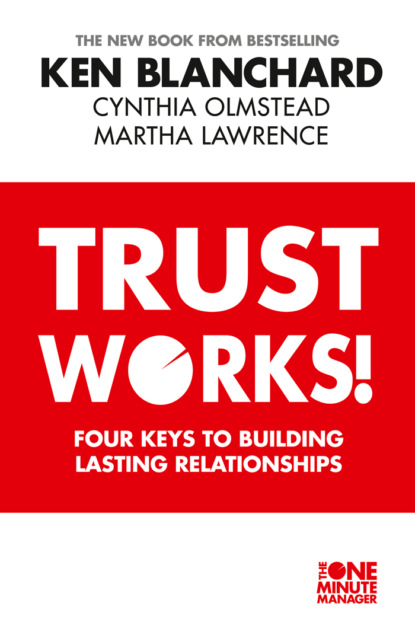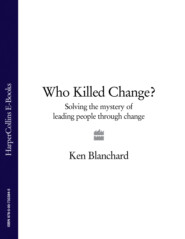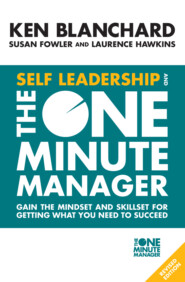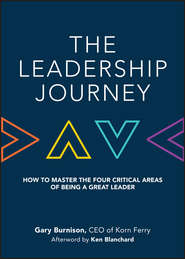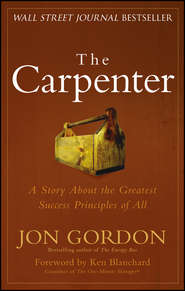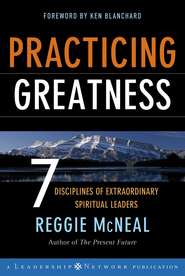По всем вопросам обращайтесь на: info@litportal.ru
(©) 2003-2025.
✖
Trust Works: Four Keys to Building Lasting Relationships
Автор
Год написания книги
2019
Настройки чтения
Размер шрифта
Высота строк
Поля
Trust Works: Four Keys to Building Lasting Relationships
Ken Blanchard
Martha Lawrence
Olmstead Olmstead
Bestselling author Ken Blanchard brings you the tie-in guide to accompany his TrustWorks! training program.Ken Blanchard is famous for his ability to make the seemingly complex simple. In Trust Works! he brings his talent to bear on the complicated and timely issue of trust.The book begins with an allegory – in this case, it’s the story of a dog and a cat with major trust issues. Their fighting, backbiting, and sabotaging soon affects the whole household – including the humans. It quickly becomes clear that unless the ongoing conflicts can be resolved, all of the pets will be without a home. Through the counsel of a wise old parrot, the animals learn the ABCDs of trust, becoming aware of the unconscious behaviours that had been eroding their relationships and begin to change their actions. In the end, the results have a positive effect that reaches far beyond the dog and cats’ relationship. Applying lessons presented in the fable to real life situations, Blanchard explores his ABCD trust model to address issues like poor morale, miscommunication in relationships, poor customer service issues, and dysfunctional leadership.Trust is an evergreen topic but is particularly relevant today, as protests in cities throughout the world underscore a growing distrust of corporations and institutions. Now more than ever, people need trust-building skills and a common language for learning the behaviours that build – or erode – trust.TRUST WORKS! is the first book to create a common, easy-to-learn language for talking about trust in a way that can bring peace and co-operation where once there was dissension.
Contents
Introduction by Cynthia Olmstead (#u1ea9ebec-4e80-5fe2-814b-396b0c930c86)
Some Perspective Before You Read This Story (#u2581ec1a-6324-5674-9183-3d66636724d4)
by Ken Blanchard (#u2581ec1a-6324-5674-9183-3d66636724d4)
Part I—A Tale of Trust (#uf637a671-c178-5d8c-92bd-504f751d1b29)
Broken Trust (#ulink_0cac593c-8b60-5c3f-bb59-8f0bb42cd173)
A Matter of Perception (#ulink_bd6f53d3-f19b-5767-bc16-b932ac2dba7e)
Ready and Able (#ulink_e1d72e41-15a0-58f8-9acf-3d5ce5bdbabc)
Believe It or Not (#ulink_9bd39b01-763e-56a2-a70c-60634e1a57c4)
The Connection (#litres_trial_promo)
It All Depends (#litres_trial_promo)
A Terrible Blow (#litres_trial_promo)
A Test of Trust (#litres_trial_promo)
Moving On (#litres_trial_promo)
How Trustworthy Do You Think You Are? (#litres_trial_promo)Scoring Your Self-Assessment (#litres_trial_promo)
Part II—Trust-Building Resources: Applying the ABCD Trust Model™ to Real Life (#litres_trial_promo)
Trust Busters and Trust Boosters: Understanding How Behaviors Affect Trust (#litres_trial_promo)
Checking Your Self-Perception: Invite Others to Assess You (#litres_trial_promo)
Learning to Diagnose Trust Issues: How to Recognize Trust Busters (#litres_trial_promo)
Learning to Have Trust Conversations: The Importance of Perception (#litres_trial_promo)
Applying the ABCD Trust Model
to Your Own life (#litres_trial_promo)
Rebuilding Damaged Trust (#litres_trial_promo)
Building Trust in Organizations: A Message for Leaders (#litres_trial_promo)
Appendix: How Trustworthy Do You Think I Am? (#litres_trial_promo)
Acknowledgments (#litres_trial_promo)
About the Authors (#litres_trial_promo)
Advance Praise for Trust Works! (#litres_trial_promo)
Also by Ken Blanchard (#litres_trial_promo)
Services Available (#litres_trial_promo)
Join Us Online (#litres_trial_promo)
Copyright (#litres_trial_promo)
About the Publisher (#litres_trial_promo)
Introduction (#ulink_e262fc9b-16a5-5207-80b8-01e046534360)
by Cynthia Olmstead
Creator of TrustWorks!
As an organizational change consultant, I help business leaders identify where they are heading, work with them to build a strategic plan, and bring the rest of the organization into alignment so that everyone is pulling together to accomplish shared goals. Some organizations find this an arduous process fraught with setbacks and sometimes even failure. Other organizations are able to implement the changes quickly and move the process along smoothly.
A few years ago I began to wonder: Why were some companies successful in implementing change while others were not? Was it the leadership? If so, what was the key factor that allowed some leaders to get people to work together to bring about the desired changes, while others failed?
Somewhere flying over Kansas on one of my many trips from the West Coast to the East, a lightbulb came on: this key factor was trust. But what is trust? How do we describe it? Does trust mean the same thing to you as it does to me? If not, how can we talk about it?
To begin answering those questions, I started asking people in my sessions what symbol they would use to represent trust. People came up with an assortment of answers: a heart, a newborn baby, a handshake, a wedding ring, a cross, the American flag. The reactions to these symbols varied wildly. Some said, “I just went through a divorce, so wedding rings don’t mean trust to me.” Or “The flag isn’t seen as a trust symbol to people in some parts of the world.”
It became evident to me that trust means different things to different people based on their experiences. This begged the question: How could we ever talk about and resolve trust issues if we were seeing them only through our own lenses? Clearly, we needed a common framework, a model that created a mutual language for trust.
I began an intensive search for that, and along the way I found some interesting academic research with sophisticated models. But they were too complicated to use at all levels of an organization, from the C suite to the front line. After six years of research—including market analysis and focus groups with CEOs, managers, and associates—I became convinced that trust was something that grew when certain behaviors were present. But which behaviors?
Working from the premise that trust is based on behaviors, I set up flip charts in my office so that during discussions with clients, colleagues, and friends I could document behaviors they thought would either build or erode trust. As the lists grew long, I realized that the behaviors fell into four main groups: Able (demonstrate competence), Believable (act with integrity), Connected (care about others), and Dependable (maintain credibility). Thus the ABCD Trust Model
was born!
Our intention in writing this book is to raise your awareness about the trust issues in your life as well as give you the language and tools to resolve them. Our hope is that you will use what you learn to build productive, joyful relationships—and that you’ll share what you learn with others, so they can do the same.
Some Perspective Before You Read This Story (#ulink_6fbf26e8-c957-53e8-9dc4-ce31ef698d2a)
Ken Blanchard
Martha Lawrence
Olmstead Olmstead
Bestselling author Ken Blanchard brings you the tie-in guide to accompany his TrustWorks! training program.Ken Blanchard is famous for his ability to make the seemingly complex simple. In Trust Works! he brings his talent to bear on the complicated and timely issue of trust.The book begins with an allegory – in this case, it’s the story of a dog and a cat with major trust issues. Their fighting, backbiting, and sabotaging soon affects the whole household – including the humans. It quickly becomes clear that unless the ongoing conflicts can be resolved, all of the pets will be without a home. Through the counsel of a wise old parrot, the animals learn the ABCDs of trust, becoming aware of the unconscious behaviours that had been eroding their relationships and begin to change their actions. In the end, the results have a positive effect that reaches far beyond the dog and cats’ relationship. Applying lessons presented in the fable to real life situations, Blanchard explores his ABCD trust model to address issues like poor morale, miscommunication in relationships, poor customer service issues, and dysfunctional leadership.Trust is an evergreen topic but is particularly relevant today, as protests in cities throughout the world underscore a growing distrust of corporations and institutions. Now more than ever, people need trust-building skills and a common language for learning the behaviours that build – or erode – trust.TRUST WORKS! is the first book to create a common, easy-to-learn language for talking about trust in a way that can bring peace and co-operation where once there was dissension.
Contents
Introduction by Cynthia Olmstead (#u1ea9ebec-4e80-5fe2-814b-396b0c930c86)
Some Perspective Before You Read This Story (#u2581ec1a-6324-5674-9183-3d66636724d4)
by Ken Blanchard (#u2581ec1a-6324-5674-9183-3d66636724d4)
Part I—A Tale of Trust (#uf637a671-c178-5d8c-92bd-504f751d1b29)
Broken Trust (#ulink_0cac593c-8b60-5c3f-bb59-8f0bb42cd173)
A Matter of Perception (#ulink_bd6f53d3-f19b-5767-bc16-b932ac2dba7e)
Ready and Able (#ulink_e1d72e41-15a0-58f8-9acf-3d5ce5bdbabc)
Believe It or Not (#ulink_9bd39b01-763e-56a2-a70c-60634e1a57c4)
The Connection (#litres_trial_promo)
It All Depends (#litres_trial_promo)
A Terrible Blow (#litres_trial_promo)
A Test of Trust (#litres_trial_promo)
Moving On (#litres_trial_promo)
How Trustworthy Do You Think You Are? (#litres_trial_promo)Scoring Your Self-Assessment (#litres_trial_promo)
Part II—Trust-Building Resources: Applying the ABCD Trust Model™ to Real Life (#litres_trial_promo)
Trust Busters and Trust Boosters: Understanding How Behaviors Affect Trust (#litres_trial_promo)
Checking Your Self-Perception: Invite Others to Assess You (#litres_trial_promo)
Learning to Diagnose Trust Issues: How to Recognize Trust Busters (#litres_trial_promo)
Learning to Have Trust Conversations: The Importance of Perception (#litres_trial_promo)
Applying the ABCD Trust Model
to Your Own life (#litres_trial_promo)
Rebuilding Damaged Trust (#litres_trial_promo)
Building Trust in Organizations: A Message for Leaders (#litres_trial_promo)
Appendix: How Trustworthy Do You Think I Am? (#litres_trial_promo)
Acknowledgments (#litres_trial_promo)
About the Authors (#litres_trial_promo)
Advance Praise for Trust Works! (#litres_trial_promo)
Also by Ken Blanchard (#litres_trial_promo)
Services Available (#litres_trial_promo)
Join Us Online (#litres_trial_promo)
Copyright (#litres_trial_promo)
About the Publisher (#litres_trial_promo)
Introduction (#ulink_e262fc9b-16a5-5207-80b8-01e046534360)
by Cynthia Olmstead
Creator of TrustWorks!
As an organizational change consultant, I help business leaders identify where they are heading, work with them to build a strategic plan, and bring the rest of the organization into alignment so that everyone is pulling together to accomplish shared goals. Some organizations find this an arduous process fraught with setbacks and sometimes even failure. Other organizations are able to implement the changes quickly and move the process along smoothly.
A few years ago I began to wonder: Why were some companies successful in implementing change while others were not? Was it the leadership? If so, what was the key factor that allowed some leaders to get people to work together to bring about the desired changes, while others failed?
Somewhere flying over Kansas on one of my many trips from the West Coast to the East, a lightbulb came on: this key factor was trust. But what is trust? How do we describe it? Does trust mean the same thing to you as it does to me? If not, how can we talk about it?
To begin answering those questions, I started asking people in my sessions what symbol they would use to represent trust. People came up with an assortment of answers: a heart, a newborn baby, a handshake, a wedding ring, a cross, the American flag. The reactions to these symbols varied wildly. Some said, “I just went through a divorce, so wedding rings don’t mean trust to me.” Or “The flag isn’t seen as a trust symbol to people in some parts of the world.”
It became evident to me that trust means different things to different people based on their experiences. This begged the question: How could we ever talk about and resolve trust issues if we were seeing them only through our own lenses? Clearly, we needed a common framework, a model that created a mutual language for trust.
I began an intensive search for that, and along the way I found some interesting academic research with sophisticated models. But they were too complicated to use at all levels of an organization, from the C suite to the front line. After six years of research—including market analysis and focus groups with CEOs, managers, and associates—I became convinced that trust was something that grew when certain behaviors were present. But which behaviors?
Working from the premise that trust is based on behaviors, I set up flip charts in my office so that during discussions with clients, colleagues, and friends I could document behaviors they thought would either build or erode trust. As the lists grew long, I realized that the behaviors fell into four main groups: Able (demonstrate competence), Believable (act with integrity), Connected (care about others), and Dependable (maintain credibility). Thus the ABCD Trust Model
was born!
Our intention in writing this book is to raise your awareness about the trust issues in your life as well as give you the language and tools to resolve them. Our hope is that you will use what you learn to build productive, joyful relationships—and that you’ll share what you learn with others, so they can do the same.
Some Perspective Before You Read This Story (#ulink_6fbf26e8-c957-53e8-9dc4-ce31ef698d2a)





